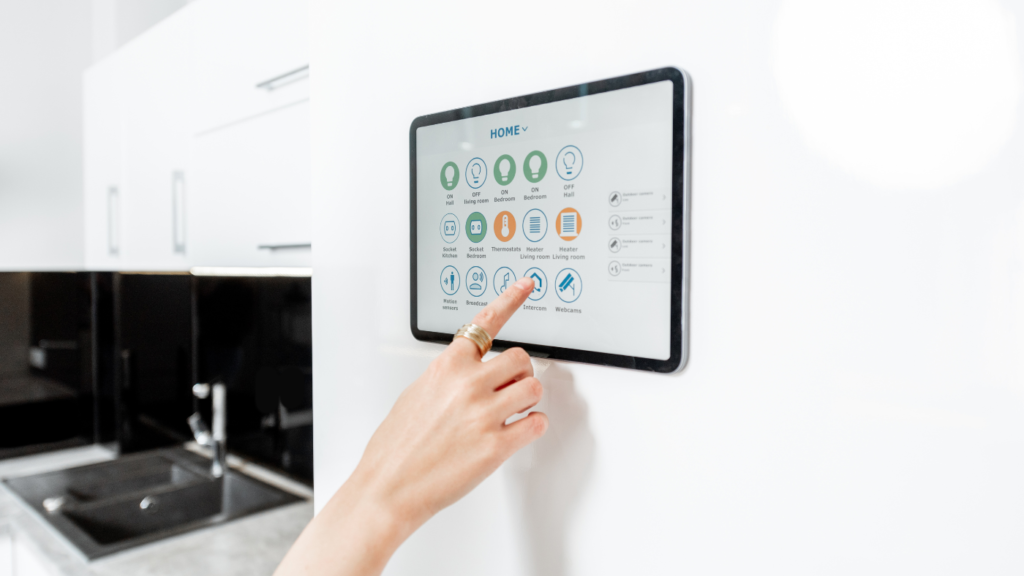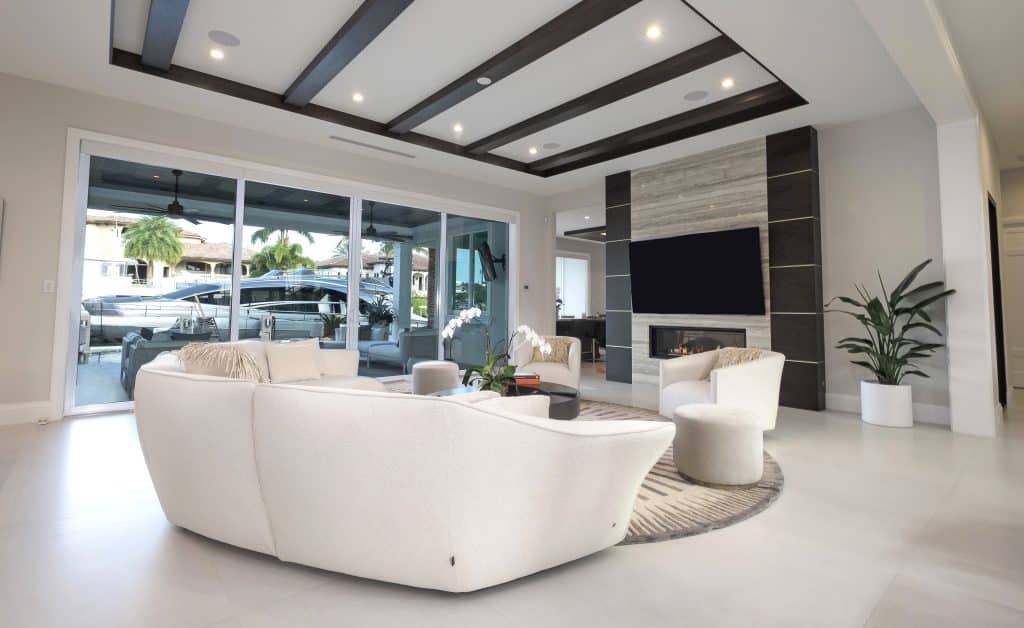With the rise of smart home technology, homeowners are able to automate and control their homes in ways that were once unimaginable. However, with this new technology comes new risks. As our homes become more connected, the risk of hacking and intrusions also increases.
In this article, we will provide 7 essential tips to help you protect your smart home and keep your family safe. From securing your Wi-Fi network to using smart locks and cameras, these tips will help you enhance your home’s security and give you peace of mind.
So, whether you’re new to smart home technology or a seasoned pro, it’s important to take the necessary precautions to ensure that your home is protected. Keep reading to discover 7 essential tips for smart home security.
There are several ways to protect your home with cutting-edge technology, and here are 7 of the most effective methods:

- Smart Cameras
Install smart home cameras that can be controlled and monitored remotely from your phone or computer. These cameras offer high-definition footage and motion detection, so you can monitor your home even when you’re away. Some cameras even have facial recognition technology and can alert you if they detect someone they don’t recognize.
Some common features of smart cameras include high-definition video quality, night vision, motion detection, two-way audio, and cloud storage. Many smart cameras can also integrate with other smart home devices, such as virtual assistants or smart locks, to create a comprehensive home security system.
Smart cameras come in various styles and sizes, including indoor and outdoor models, wired or wireless options, and standalone cameras or cameras that are part of a larger home security system. When choosing a smart camera, it’s important to consider your specific needs and preferences and factors such as camera quality, storage options, and ease of use.
- Smart Locks
Smart locks allow you to lock and unlock your doors remotely, and some even allow you to give temporary access to visitors. You can also set up alerts to notify you when someone enters or exits your home.
Smart locks typically use one or more of the following methods to allow access:
- Keypad entry: Users enter a unique code to unlock the door. Codes can be changed or revoked at any time.
- Bluetooth: Users with a paired smartphone can unlock the door simply by approaching it. Some smart locks also use Bluetooth to lock the door when the user leaves automatically.
- Wi-Fi or Z-Wave: Smart locks connected to a home’s Wi-Fi network or Z-Wave network can be controlled and monitored remotely using a smartphone app or a virtual assistant.
When choosing a smart lock, it’s important to consider factors such as compatibility with your existing lock and door, ease of installation, and the level of security the safety provides.
- Smart Alarms
Another smart home security aspect you should consider is a smart alarm. Smart alarms can detect break-ins, fires, and other emergencies and send alerts to your phone. Some systems even have sensors that can detect carbon monoxide and water leaks.
Some common features of smart alarms include:
- Motion detection: Smart alarms can detect motion in and around the home and trigger an alert or warning.
- Door and window sensors: Smart alarms can be programmed to detect when a door or window is opened, triggering an alert or warning.
- Cameras: Many smart alarms are equipped with cameras that can provide live video feeds or capture footage when motion is detected.
- Siren or alarm: Smart alarms can sound a loud siren or alarm when triggered, which can help to deter intruders and alert occupants.
- Remote monitoring: Some smart alarms offer 24/7 monitoring services, where a team of experts can respond to alerts and dispatch emergency services if needed.
- Smartphone app: Many smart alarms can be controlled and monitored remotely using a smartphone app, which can provide real-time alerts and notifications.
Smart alarms can also integrate with other smart home devices, such as smart locks and smart lights, to create a comprehensive home security system.
- Smart Lights

Smart home lighting can be controlled and automated using smartphones, tablets, or other smart devices. Smart lights can be programmed to turn on and off at specific times, making it look like someone is home even when you’re away. They can also be controlled remotely from your phone so that you can turn them on or off from anywhere.
Many smart lights are LED, which uses less energy than traditional light bulbs and can be programmed to turn on and off automatically, reducing energy waste. Smart lights can also be programmed to change colors, brightness, and other settings, allowing you to customize your home lighting to your preferences.
Smart lights can be controlled remotely, so you can turn them on or off from anywhere using a smartphone app or virtual assistant. Smart lights can be programmed to turn on and off at specific times, making it look like someone is home even when you’re away, deterring potential intruders.
- Smart Sensors
Smart sensors can detect movement, sound, and changes in temperature, which can alert you to potential intruders or other unusual activity. Some sensors can even monitor windows and doors, so you’ll be alerted if they’re opened.
Smart and advanced sensors can be integrated with a home security system to detect and respond to potential threats or emergencies. They are typically small, discreet devices that are designed to detect motion, sound, changes in temperature, and other environmental factors that could indicate a security breach or other problem.
Smart sensors can also be programmed to send alerts or notifications to a homeowner’s smartphone or other devices when triggered, providing real-time information about potential threats or emergencies. When integrated with other smart home devices, such as smart locks or smart lights, smart sensors can provide a more comprehensive home security system.
- Virtual Assistants
Virtual assistants like Amazon Alexa or Google Assistant can be integrated with your smart Google home security system to provide voice control and additional features. For example, you can ask your virtual assistant to turn on your security cameras or set your alarm system.
Using voice commands, virtual assistants can control and monitor smart home devices, including security cameras, alarms, and smart locks. They can also be programmed to send alerts and notifications to your smartphone or other devices when a security event is detected, such as motion detection or a door opening. This can provide a hands-free and convenient way to manage your home security.
Virtual assistants can automate certain home security tasks, such as turning on smart lights or arming the alarm system at a certain time of day. They can also be integrated with other smart home devices, such as smart speakers or displays, to provide a more comprehensive home security system.
This software can also remotely access and monitor your home security system, allowing you to check security camera footage, unlock or lock smart locks, and control other smart home devices from anywhere with an internet connection. Overall, virtual assistants can provide a layer of convenience and control for your smart home security system, making it easier to manage and monitor your home security.
- Professional Monitoring
Some smart home security systems offer professional monitoring services, where a team of experts monitor your home 24/7 and can dispatch emergency services if needed. This can provide an added layer of protection and peace of mind.
Professional monitoring services for home security are third-party services that provide 24/7 monitoring of your home security system. When your home security system detects a potential security breach or emergency, such as a break-in or fire, the monitoring service will receive an alert. It will take action to respond to the situation.
Professional monitoring services typically involve a team of trained professionals equipped to handle various emergencies. They will contact the appropriate authorities, such as the police or fire department, and notify you of the situation as soon as possible.
Conclusion
In summary, many smart home security with cutting-edge technologies are available to help protect your home, from smart cameras and locks to alarms and sensors. Combining these technologies with a virtual assistant and professional monitoring allows you to create a comprehensive smart home security system that gives you peace of mind and keeps your home safe.
When choosing a company to integrate your smart home security system, Premium Digital Control is an excellent choice. We are known for our high-quality products, exceptional customer service, and expertise in the smart home industry. With Premium Digital Control, you can rest assured that your home’s security system will be integrated seamlessly and professionally.
As the leading solutions provider for automating different types of areas with smart technology in South Florida, we are committed to giving you the best smart home security technology you deserve. Book an appointment now and get a complimentary consultation.


